Some time before 900 CE, people begin migrating into what will become present-day Georgia from the area around the Mississippi River near present-day St. Louis. Culturally, archaeologists consider these immigrants to be Mississippian people and they know that this is a migration because the material culture they bring with them (and the material culture they leave behind for archaeologists to study) is completely different from that of earlier peoples. This material culture included a different style of pottery, different burial practices, and, most evident, a totally different architecture.
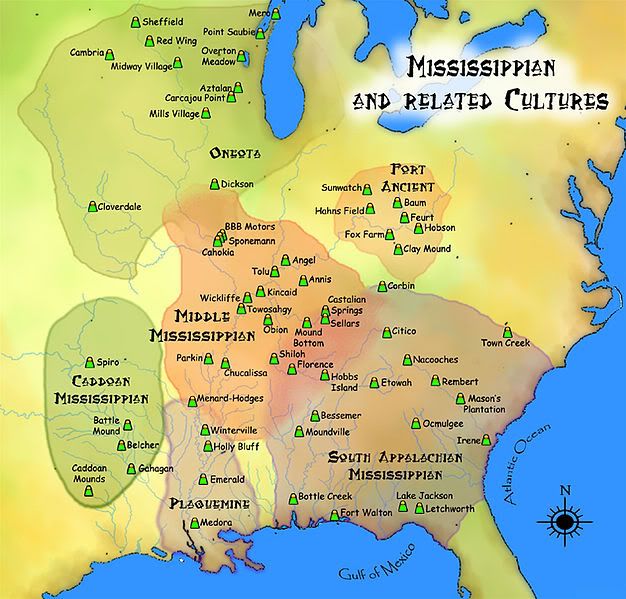
About 900 CE, Mississippian immigrants established the village of Ocmulgee which included a series of large earthen mounds for public ceremonies. Large earthen mounds-actually pyramids built from earth-were characteristic of Mississippian culture. Public ceremonies were carried out on top of these mounds in view of the people who gathered in the plaza below.
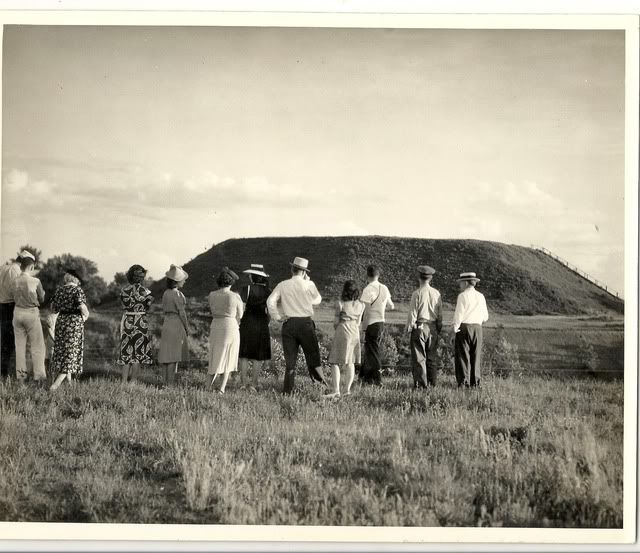
A temple mound as it appeared in 1940 is shown above.
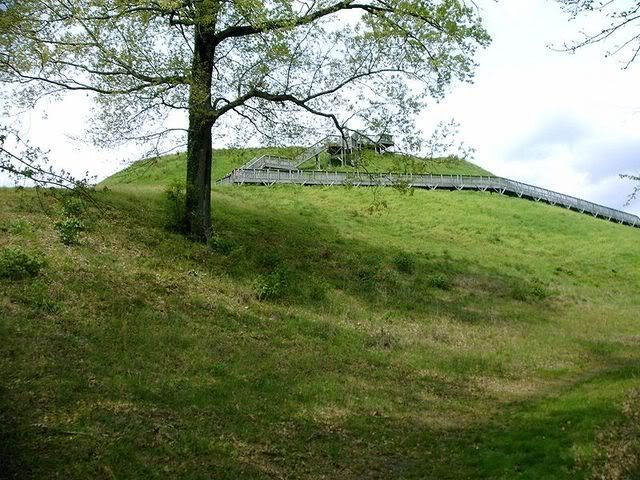
A current view of the Great Temple Mound is shown above.
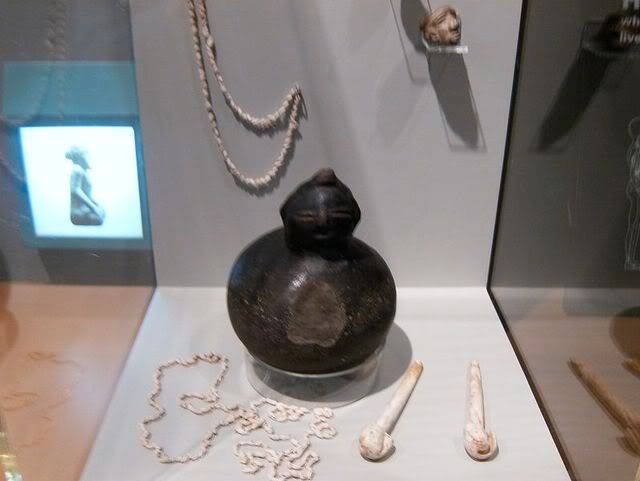
Shown above is a pottery vessel with a lid in the shape of a human head which was found at Ocmulgee. In addition, pipes and necklaces from the site are also in the display.
There are a total of seven mounds at Ocmulgee. The tallest mound, known today as the Great Temple Mound, is 55 feet high. Archaeologists using magnetometer scans have found that this mound had a spiraling staircase which was oriented toward the floodplain. This staircase is unique among the many Mississippian culture sites.
The temple mounds at Ocmulgee, as at other Mississippian sites, have a flat top where a rectangular wooden building was constructed. In addition to temple mounds there were also burial mounds.
During the height of occupation at Ocmulgee (950 to 1150), the population was socially stratified. Subsistence was provided by skilled farmers whose crops of corns, beans, and squash provided enough surplus to support a religious and political elite population. The elite leaders supervised the construction of the large, earthen mounds. The dirt for these mounds was carried by hand, transported in woven baskets.
The most distinctive feature of the village is the subterranean earth lodge which is about 42 feet in diameter. On the floor of the council house is a raised earthen platform shaped like a falcon with its head oriented toward the fire pit in the center of the building. Molded seats (47 in all) on the platform provided seating for the leaders.
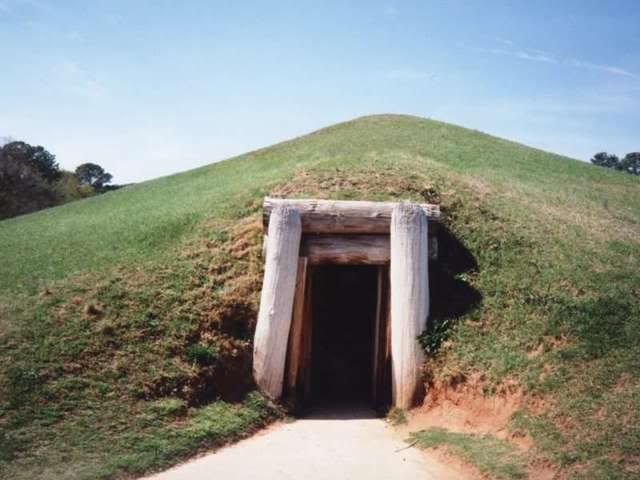
Shown above is the entrance to the reconstructed earth lodge at Ocmulgee National Monument.
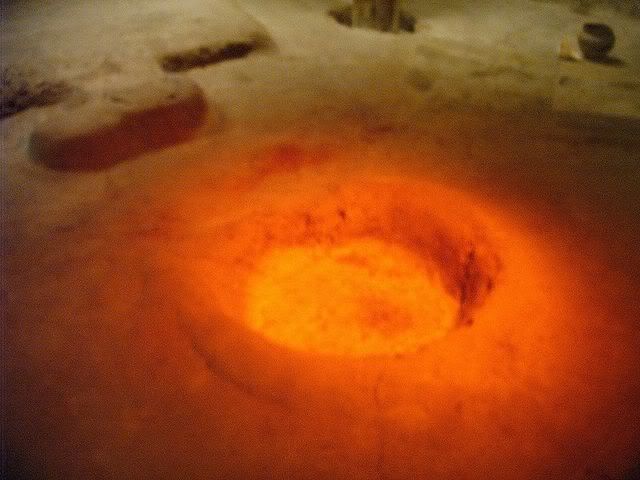
Shown above is the fireplace in the reconstructed earth lodge.
In the council house (called a “temple” by some of today’s writers) there is a recessed basin at every seat. This basin is used as an individual vomitaria during the Black Drink ceremony in which vomiting is used for purification. The Black Drink is an active and powerful diuretic which was consumed before important meetings as its purgative influences freed the participants’ bodies from all hindrance to thought and thus prepared them for serious and careful discussion. The drink was made from the leaves of the cassina shrub. Consuming the Black Drink provided physiological effects due to massive doses of caffeine.
The town of Ocmulgee was abandoned by the Mississippian people about 1200 CE. As the Mississippian culture in the area declined, a new cultural tradition coalesced a short distance downstream from Ocmulgee. Called the Lamar Phase by archaeologists, and flourishing by 1350 CE, the Lamar Mounds and Village Site has two mounds.
At the present time, the Ocmulgee National Monument occupies a 702-acre site located on the east bank of the Ocmulgee River. In 1934, the National Park service designated Ocmulgee as a site for federal protection. In 1936, the Ocmulgee National Monument was formally established as an historic unit of the National Park Service. In 1996 it was listed on the National Register of Historic Places.
In 1997, the National Park Service designated the Ocmulgee National Monument as a Traditional Cultural Property. This was the first Traditional Cultural Property designated east of the Mississippi River. At the present time, the Ocmulgee National Monument has a visitor center which includes an archaeological museum. The museum displays artifacts and interprets the pre-contact Native American cultures of the area.
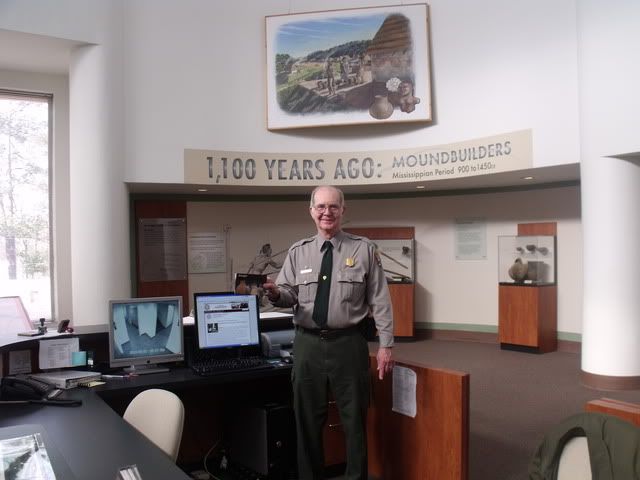
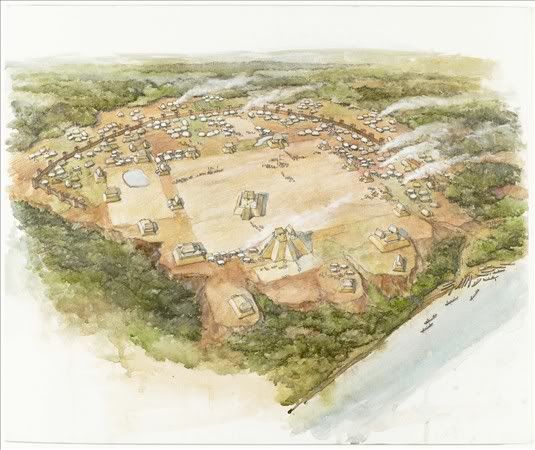
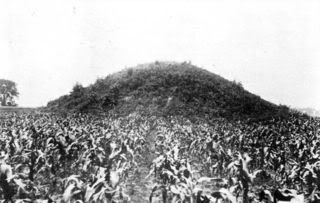
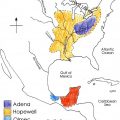
Leave a Reply